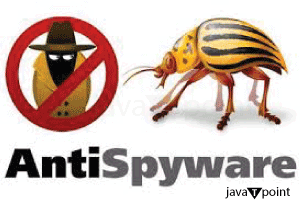What is Anti-Spyware Software?Anti-spyware software safeguards your computer against pop-up advertising, poor performance, and security issues caused by spyware and other unwanted programs. Many dangerous software programs, including spyware, are purposely intended to be difficult to uninstall. When you try to uninstall the software, it may resurface after you restart your computer, much like other apps. 
Windows Defender is a free program that protects you from spyware. To tackle the most recent types of spyware, anti-spyware software must be kept up to date. The Windows Defender should be set to update automatically. It also includes Real-Time Protection, a monitoring system that proposes anti-spyware measures and minimizes disturbances when malware is found. What is Spyware?Spyware is a sort of harmful software or malware that is aimed to reveal personal information, steal internet usage statistics, and obtain accessibility to harm your computing device. Spyware is a program that is downloaded to a user's device without their permission. Even spyware implemented for harmless purposes frequently violates end-user privacy agreements and has the potential for misuse. More active spyware will reset browser homepages, open pop-up advertising, divert online searches, and have an influence on browser security. At its most dangerous, spyware monitors all computer activity. It exposes personal data, passwords, credit card numbers, and banking information, helping in identity theft and corporate espionage or other cyber assaults. Some spyware turns off firewalls and anti-virus software, lowers browser security settings, and creates new attack channels. Aggressive variations try to deactivate or uninstall rival spyware programs in order to reduce the possibility of the victim taking action or investing in a spyware removal solution. What Causes Spyware Infections?Spyware may be spread in a variety of methods. One typical technique is to deceive consumers into accessing a malicious website using email, text messages, pop-ups, or advertisements. Users can even become infected if they do nothing. In certain cases, infected advertisements are distributed to potential victims over a legal website, a practice called malvertising. It's critical to recognize that spyware does not always propagate in the same manner that other forms of malware or computer worms do. Spyware is not generally concerned with transferring or duplicating itself to other devices. Instead, spyware infiltrates the system by tricking the user, packaging itself with useful applications, or exploiting holes in web browsers and operating systems. Internet Explorer is a common target owing to its ubiquity, history of security vulnerabilities, strong integration with the operating system, and Browser Helper Objects, which allow attackers to manipulate the browser's behavior. How does Anti-Spyware software work?Anti-spyware software can only be used to identify and remove spyware software that is already installed on the computer. This sort of spyware prevention is typically more popular and easier to use. This program detects and removes spyware by utilizing behavioral scanning techniques/methods. This program examines your hard drive and registry for spyware and adware remnants and either eliminates them or urges the user to do so. These programs monitor incoming data from email, websites, and file downloads to prevent spyware programs from infiltrating the computer operating system. Real-time spyware protection works in the same way as real-time anti-virus protection does. It may also intercept attempts to install start-up programs or change browser settings in rare instances. Because many spyware and adware are introduced as a consequence of browser vulnerabilities or user mistakes, sandboxing browsers with security software can also help limit any damage done. Previous versions of anti-spyware programs were primarily concerned with detection and eradication. SpywareBlaster by Javacool Software, one of the first software to provide real-time security, prevented the installation of ActiveX-based and other malware programs. Spyware Detection and Removal ChallengesThe most difficult aspect of identifying spyware is the sheer amount of versions available. Spyware developers are aware that their spyware will ultimately be discovered and deleted; therefore, they continue to develop new versions of their programs. Before new versions can be safeguarded against, they must first be identified as spyware, and their signatures must be uploaded to spyware definitions databases used by spyware removal tools. Many anti-spyware applications, like most anti-virus software, require a continuously updated database of threats. Anti-spyware developers uncover and assess new malware programs, creating "signatures" or "definitions" that allow the software to identify and delete the spyware. Anti-spyware software is only helpful if it receives regular updates. Some software offers a subscription-based update service, while others offer free updates. Updates can be downloaded automatically on a schedule or before a scan, or they can be updated manually. With this spyware prevention program, a user may schedule scans of the computer on a weekly, daily, or monthly basis to identify and eliminate any spyware software that was previously installed. |
 For Videos Join Our Youtube Channel: Join Now
For Videos Join Our Youtube Channel: Join Now
Feedback
- Send your Feedback to [email protected]
Help Others, Please Share










